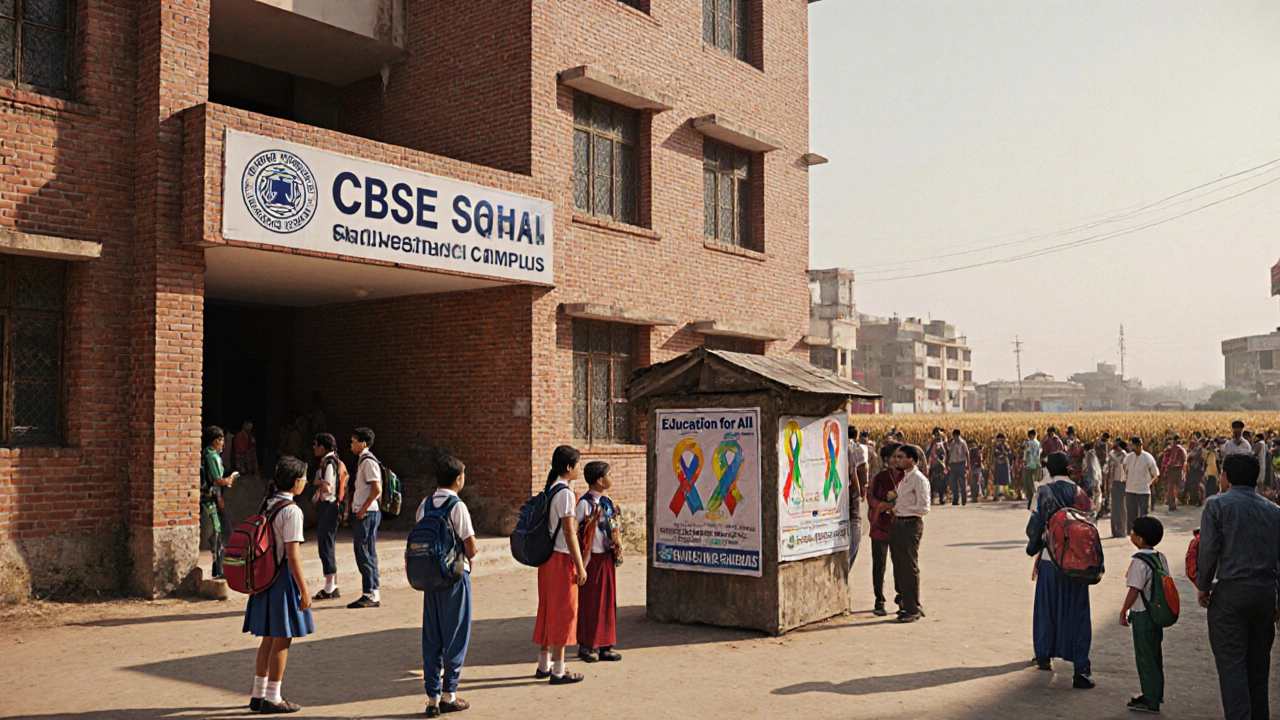CBSE School State Comparison Tool
Compare CBSE School Counts
Select two Indian states to compare their CBSE school counts based on 2025 data
Ever wondered which part of India hosts the largest number of CBSE schools? Parents, teachers, and education planners often need that data when choosing a location, planning resources, or simply satisfying curiosity. Below we break down the latest 2025 figures, explain where the numbers come from, and highlight what the top‑ranking state tells us about the country’s schooling landscape.
Quick Takeaways
- Uttar Pradesh tops the list with over 9,200 CBSE‑affiliated schools as of 2025.
- Maharashtra and Karnataka round out the top three, each hosting roughly 5,800 and 5,300 schools respectively.
- Delhi, despite its small size, has the highest density of CBSE schools per square kilometre.
- Data come from the official CBSE affiliation portal, verified against the Ministry of Education’s school‑wise reports.
- If you’re moving or opening a new school, focusing on the top five states covers more than 65% of all CBSE institutions in India.
What Is the CBSE and How Does Its Affiliation Work?
Central Board of Secondary Education (CBSE) is a national board of education in India that administers public and private schools from primary to senior secondary level. Affiliation means a school meets the board’s curriculum standards, infrastructure criteria, and teacher qualifications. Once approved, the school can sit for the All‑India Secondary School Examination (AISSE) and the All‑India Senior School Certificate Examination (AISSCE).
How We Count CBSE Schools
The numbers presented below are pulled from two primary sources:
- The CBSE affiliation portal, which lists every active school with a unique affiliation code.
- The Ministry of Education’s school database, which cross‑checks the affiliation status and adds any recent removals or additions.
Both datasets are updated quarterly. For this article, we used the snapshot released in June2025 and filtered out schools that reported “inactive” status.

Top States by Number of CBSE Schools (2025)
| Rank | State / Union Territory | Number of CBSE Schools | Share of Total CBSE Schools (%) |
|---|---|---|---|
| 1 | Uttar Pradesh | 9,238 | 22.4 |
| 2 | Maharashtra | 5,812 | 14.1 |
| 3 | Karnataka | 5,327 | 12.9 |
| 4 | Delhi | 4,912 | 11.9 |
| 5 | Tamil Nadu | 4,075 | 9.9 |
| 6 | West Bengal | 3,684 | 8.9 |
| 7 | Gujarat | 3,412 | 8.3 |
| 8 | Rajasthan | 3,189 | 7.7 |
These eight states together account for nearly 70% of all CBSE‑affiliated institutions across the country.
Why Uttar Pradesh Leads
Uttar Pradesh (UP) is India’s most populous state, with over 240million residents in 2025. A larger population naturally creates demand for more schools. Two additional factors push the numbers higher:
- Policy push: The state government’s 2023‑2024 “Education for All” scheme offered subsidies for schools that obtained CBSE affiliation, encouraging private operators to align with the national board.
- Urban‑rural spread: While major cities like Lucknow and Noida host flagship CBSE schools, the board’s presence has expanded into tier‑2 and tier‑3 towns, where parents view CBSE as a gateway to national engineering and medical entrance exams.
Consequently, the growth rate of new CBSE schools in UP was 4.3% year‑on‑year between 2022 and 2025, higher than the national average of 2.7%.
How the Other Top States Compare
Maharashtra benefits from a strong industrial base in Mumbai and Pune, where many families prefer CBSE for its national relevance. Karnataka’s tech hubs (Bengaluru, Mysuru) attract IT‑focused families who value CBSE’s emphasis on science and math.
Delhi’s high density reflects its role as the capital nation‑wide. Even though it houses fewer schools than UP, the per‑square‑kilometre concentration is the highest - about 0.45 schools per km² versus 0.12 in UP.
TamilNadu’s strong Tamil‑medium state board coexists with a growing CBSE segment, mainly in Chennai and Coimbatore, where English‑medium education is preferred for higher‑education mobility.
What This Means for Parents and Educators
- Relocation decisions: If you’re moving to a new city, checking the local CBSE school density can give you a sense of competition and availability.
- Starting a new school: States in the top four present both opportunity (large market) and competition (many existing schools). Emerging states like Odisha or Bihar may offer less saturated markets.
- Teacher recruitment: CBSE‑affiliated schools often look for teachers with experience in the board’s curriculum. Knowing which states have more schools helps you target job portals effectively.
How to Verify a School’s CBSE Affiliation
Because the affiliation list updates regularly, always double‑check before enrolment or partnership:
- Visit the official CBSE Affiliation Portal (no external links required, but the URL is for reference).
- Enter the school’s name or affiliation number in the search box.
- Confirm the school’s status is marked “Active” and note the year of the last renewal.
- Cross‑reference the school’s address with the state‑wise list we provided to ensure it matches the state you expect.
If a school is missing from the portal or shows “inactive,” ask the administration for the latest renewal certificate.
Future Outlook - Will the Rankings Change?
Several trends could reshape the map by 2030:
- Digital‑first schooling models may reduce the need for physical CBSE campuses, especially in remote districts.
- State governments are rolling out their own national‑curriculum alternatives, which could siphon off some CBSE demand.
- Urban migration continues; states like Maharashtra and Karnataka may see slower growth compared to northeast states that are now investing heavily in education infrastructure.
Keeping an eye on the quarterly CBSE portal releases will help you stay ahead of these shifts.
Frequently Asked Questions
Which state currently has the most CBSE‑affiliated schools?
Uttar Pradesh leads with over 9,200 CBSE schools as of the June2025 data release.
How often does the CBSE update its affiliation list?
The official portal is refreshed quarterly, with special updates after major policy changes or during the annual audit cycle.
Can a school be affiliated with both a state board and CBSE?
Yes, many schools run dual curricula, offering state‑board sections alongside CBSE classes. However, each section must meet the respective board’s infrastructure and teacher‑qualification standards separately.
What advantages do CBSE schools provide over state‑board schools?
CBSE’s curriculum is aligned with national competitive exams (JEE, NEET), offers a uniform syllabus across the country, and emphasizes analytical skills over rote learning, which many parents see as beneficial for higher‑education mobility.
If the data shows a state with many schools, does that guarantee quality?
Not necessarily. Affiliation ensures minimum standards, but actual teaching quality varies widely. Look for school‑level performance metrics like AISSE/AISSCE pass rates, infrastructure audits, and parent reviews before deciding.
Next Steps for Readers
- Visit the CBSE portal to confirm the latest numbers for your specific city.
- If you’re a school owner, compare your state’s growth rate with the national average to gauge market potential.
- Parents should shortlist schools in the top‑ranking states, then arrange campus visits to assess facilities and teaching methods.
Understanding where CBSE schools are concentrated gives you a strategic edge-whether you’re planning a move, opening a new institution, or simply satisfying curiosity about India’s education landscape.
